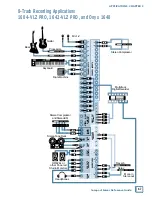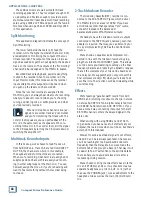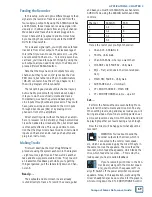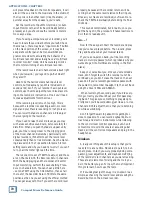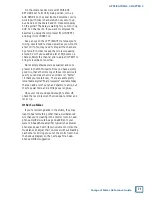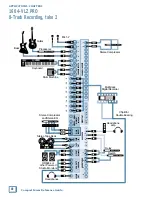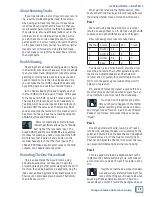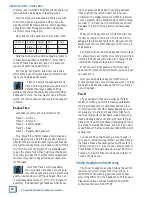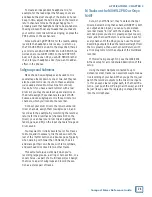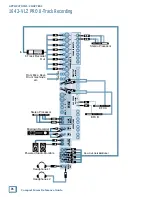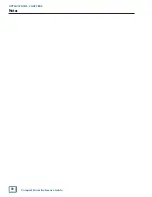
77
Compact Mixer Reference Guide
APPLICATIONS: CHAPTER 2
The 1642-VLZ PRO has a lot in common with the
1604. This hookup shows the 1642-VLZ PRO set up for
8-Track recording with split monitoring and using the
built-in double-bussing feature on the SUB outputs.
Refer to the 1604 operating procedures for a how-to-
do-it description.
Inputs and Outputs
It’s nice to have all the cables in place so you don’t
need to re-patch when going from tracking to mix-
down, and that’s a plus with this hookup.
Multitrack Recorder Connections
In this application, we’re using Line Inputs 1-8 as
the recorder returns. Those will normally be assigned
to the main L-R bus so they will appear in the head-
phones, control room monitors, and at the inputs of
the mixdown recorder. Since the 1642 has 8 mono
and 4 stereo inputs, this layout is more appropriate
for track bouncing and one-track-at-a-time recording
than bringing the recorder returns in on the last 8
(stereo) channels.
Connect the sound sources to Mono/Stereo inputs
9-10 and 11-12. If you need more than two mic
inputs, this is an excellent place to use an outboard
mic preamp or two, such as the Onyx 800R-800. Using
outboard preamps for the different colors that they
impart often gives a nice touch to a recording.
Use the PAN controls and ASSIGN buttons to route
the signal from the mic or line inputs 9-12 through
the SUB Outputs to the recorder inputs. As with the
1604 hookup, we’re using subgroups as signal routers,
even though they may not be summing more than one
signal.
The 1642-VLZ PRO provides two jacks for each of
the four SUB outputs. Connect these to the eight
inputs to the 8-track recorder with BUS 1 going to
tracks 1 and 5, BUS 2 going to tracks 2 and 6, etc.
Effect Processor Connections
The two effect processors in this hookup are fed
from AUX SENDs 3 and 4, and, in this example, are
returned to the stereo mix through the two stereo
line-level input channels 13-14 and 15-16.
The effect processor outputs could also be con-
nected to AUX RETURNS as shown in the 1604
recording hookup. This would free up the stereo line
inputs for additional recording sources – a drum
machine, another keyboard, or four more channels
of outboard mic preamps. But variety is the spice of
mixer hookups.
A Purist’s Recording Path
For recording with the minimum electronics in
the signal path, you’ll want to patch channel direct
outputs or insert outputs directly to the recorder
inputs. Of course you can always connect a line-level
source such as a mic preamp or keyboard directly to
a recorder input for the purest signal path.
Since only Channels 1-8 have direct outputs and
inserts, you’ll need to free those up if you want the
most direct path from the mic preamp to the re-
corder.
During tracking, you can move the recorder re-
turns to the eight stereo line level inputs 9-16 (you’ll
have to move or lose the effect returns). This won’t
give you all the panning fl exibility that you have on
the mono inputs, since, with both inputs of a stereo
channel connected, each input is routed to either the
Left or Right and the PAN only adjusts the balance
between the two. It’ll do for monitoring while track-
ing, however.
When you get ready for mixdown, you won’t need
the direct outputs, so move the recorder outputs
back over to Channels 1-8. After a few switcheroos
like this, you’ll be ready for a patchbay.
Recording, Overdubbing, and Mixing
Refer to the 1604-VLZ PRO section for a blow-
by-blow description of a tracking session. The only
variations are where we’ve chosen to connect things
in this example.

